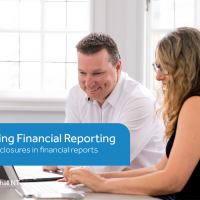The latest changes to the superannuation system – which took effect on 1 July 2017 – and their effects on self-managed super funds have been well documented. One area that hasn’t been as well publicised is what happens to your money upon death. This is surprising given changes to death benefits could possibly have the biggest impact of all. The following document will alert you to the issues that you and your financial advisor should consider when performing your self-managed super fund health check.
An introduction to the Transfer Balance Cap (TBC)
The TBC limits the amount of capital an individual can use to start ‘retirement phase’ income streams from 1 July 2017. This in turn limits a fund’s tax-exempt earnings derived by the assets supporting ‘retirement phase’ income streams. The TBC for 2017/2018 is $1.6 million and will be subject to indexation (CPI) in increments of $100,000.
Once a retirement income stream has reached a balance of $1.6 million, its value is able to fluctuate below and above this amount. Increases will commonly occur through investment earnings and reductions through benefit payments. You will not be able to ‘top up’ your transfer balance account if it falls below $1.6 million because of investment fluctuations and pension payments. Importantly, transition to retirement income streams which are not in retirement phase, age pensions or overseas pensions, will not count towards the TBC.
The following events count towards the TBC as a ‘credit’ and increase your transfer balance account:
Credits to TBC
Market value of existing account based Retirement Phase income streams at 30 June 2017
Market value of new account based RP income streams from 1 July 2017
Value of reversionary pension at time of death – credit arises 12 months after
Other death benefits
Modifications for child death benefit pensions
The introduction of the TBC also means that valuations of your SMSF assets become vitally important. These assets will support the balance that is measured to your transfer balance account and so, you must ensure assets are valued timely and accurately. The Australian Taxation Office has a valuation guideline for SMSFs that should be utilised in this process.
The TBC works differently again if you are in receipt of a lifetime pension or a life expectancy & market linked pension. These are valued by a ‘special value’ and count towards your TBC as follows:
- A life-time pension or annuity’s special value is their annual entitlement multiplied by 16.
- A non-commutable life expectancy or market-linked product’s special value is their annual entitlement multiplied by the number of years (rounded up) remaining in that product.
In order to work out an annual entitlement, the first pension payment is taken to be annualised.
Death benefit changes: The biggest impact of all
The TBC will have the biggest impact of all in respect to death benefit pensions. As the TBC works on an individual basis, any death benefit income stream an individual receives as a beneficiary will count towards their $1.6 million cap along with their existing benefits. The deceased member’s cap no longer exists. Therefore, it is crucial that couples and beneficiaries are on top of their estate planning.
A death benefit pension credit counts towards a beneficiary’s TBC when they begin to receive the pension and the credit’s value is the amount of assets supporting the pension.
For the purposes of a reversionary beneficiary, a credit arises 12 months from the date of the death of the original superannuation income stream recipient. The value of the credit though is based on the value of the income stream at death.
Despite the fact that a death benefit pension will count towards to a beneficiary’s cap, the single biggest factor that trustees must consider is that death benefits in excess of the TBC must be paid as lump sum death benefits. They can no longer be kept in a beneficiary’s accumulation account as they had been before 1 July 2017.
Some other death benefit issues to consider with your advisor may also include:
- Binding death benefit nominations
- Insurance in superannuation
- Modified rule for child death benefit pensions
How can Nexia Edwards Marshall NT help you?
To discuss this topic in more detail with respect to your specific circumstances, please contact Sarah McEachern or your Nexia Edwards Marshall NT Adviser who can put you in touch with an SMSF Specialist.


